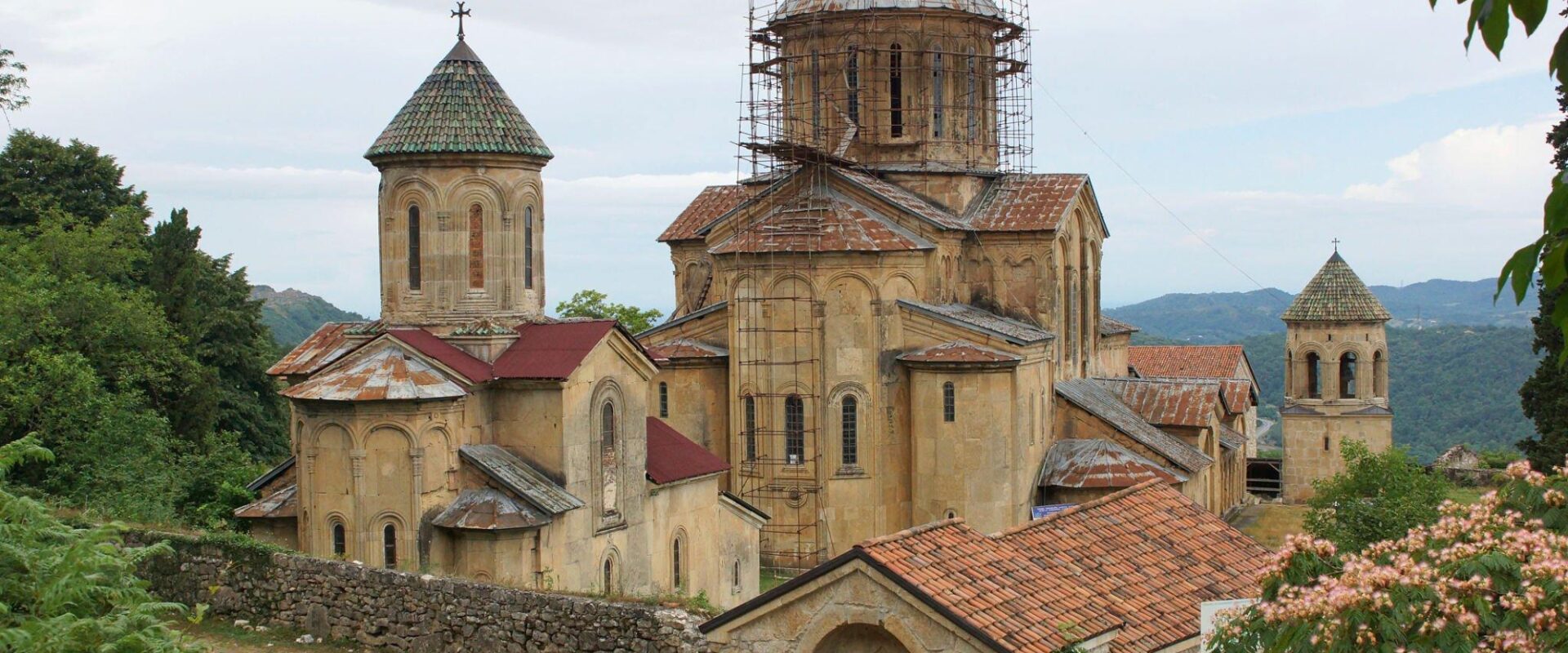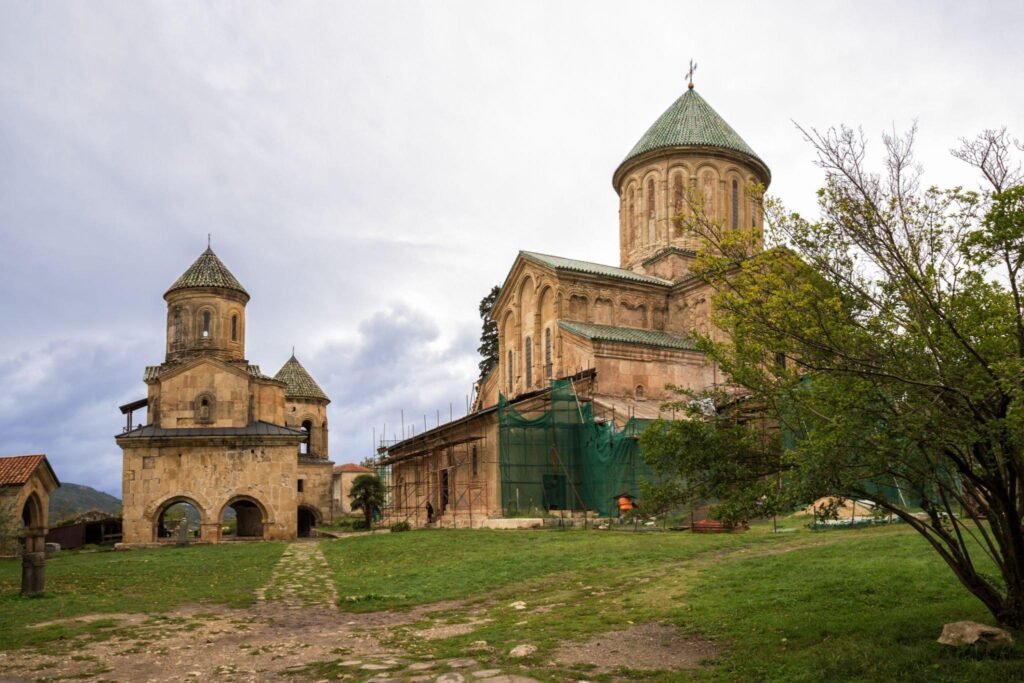
Gelati Monastery
About Gelati Monastery
Gelati Monastery is located in the Imereti region, 11 km from the city of Kutaisi. The monastery was founded by David the Builder in 1106. We read in his will: “The monastery remained for my burial and for the crypt of my children forever and I will take eternal pain, so may my son Dimitri complete the construction”. Here the greatest king of Georgia is buried. The ensemble includes the main church of the Assumption of the Virgin, St. George’s Church, St. Nicholas Church, bell tower, academy and fence. Gelati Monastery was the largest cultural and educational center, at different period here worked: Arsen Ikaltoeli, Arsen Bulmaisimisdze, Petre Gelateli, Evdemon Chkhetidze, Ekvtime Sakvarelidze, Gedeon Lortkipanidze and others. David could not finish the construction of the monastery and his son Demeter continued the work. In the XII-XV centuries the Gelati Monastery was granted full autonomy, recognized only the supreme right of the king, even the Catholicos-Patriarch of Georgia had no governmental power. After the political collapse of Georgia, Gelati Monastery passed into the hands of the kings of western Georgia. On November 23, 1510, it was burned by the Ottoman army invading Imereti. The kings of Imereti Bagrat III and George II restored the Gelati Monastery and donated new lands. Bagrat III was called the “second builder” of Gelati. In the second half of the XVI century, the residence of the Catholicos-Patriarch of Western Georgia was moved from Bichvinta to Gelati. From the XVIII century, large-scale restoration works were carried out in Gelati Monastery by George VI, Alexander V, Solomon I, Solomon II and the bishops of Gelati. After the unification of the Kingdom of Imereti with the Russian Empire, the monastery was transformed from a church seminary into a state institution. Gelati Monastery owned a rich collection of manuscripts and engraved works of art that are now preserved in museums. Gelati complex is included in the list of UNESCO World Heritage Sites.
Architecture
Gelati Monastery includes several buildings, the dominant one being the main Church of the Assumption. The complex also includes: St. George’s Church, St. Nicholas Church, bell tower, academy and fence. The main temple of the Assumption of the Virgin Mary is a central-domed building. The interior of the temple is especially impressive. The wide and high dome erected in the center rests on transitional arches on four arms. The arms of the cross that make up the central space are different. The main, eastern arm consists of a deep beam and a semicircular apse. To the right of the altar is Sadiakvne(room for storing things to the south side of an altar), and to the left is Samkvetlo (place where everything is done for the liturgy). The arms of the cross are covered with slightly arrowed vaults. The sides of the western part of the temple are two-storied, with choirs arranged on the second floor. The altar on the level of the choir also has a second floor where the hiding places were located. The central space of the building is crowned by a wide, high, sixteen-arched dome. The transition from the under dome square to the circle is done by sails. The interior space of the temple is well lit. The building is surrounded on three sides by later additions, which somehow aggravate it. The facades are decorated simply: Only doors and windows are decorated. The outer masses of the temple, within the main building, are orderly and unified. The facades are treated with decorative arcades of complex rhythm. Important samples of Georgian monumental painting and mosaic are preserved in Gelati Cathedral.
To the east of the main temple stands St. George’s church, which was built in the early XIV century. The plan of the temple and the solution of the interior space are in line with the traditions of the era. The church draws attention with beautiful relief ornaments and frescoes.
To the west of the main temple there are St. Nicholas two-storey church and an academy building. There is an arched exit on the first floor of the church. A small cross-type church is erected on this building. The first floor is connected to the second by a stone staircase. The building of Gelati Academy stands on a steep riverbank. The entrance has a richly decorated four-column gate. We enter the huge hall through the gate. The building is rectangular in shape. There are stone benches along the walls that were provided for the academy listeners.
The first bell tower is contemporaneous with two monasteries, the third – relatively late, XIV century. Water is drawn on the first floor. Historical sources tell us that water used to enter all the chambers and stalls through pipes.
